Growing up in California, a ‘healthy tan’ is what we all strived for, and the darker the better. My friends and I would lay out for six hours straight slathered in oil until our skin was peeling off in long sheets, which we thought was funny (Thirty years later, not so funny). We didn’t know any better.
In my mid 30’s, I started to notice dark spots of pigmentation on my face and hands. I’m naturally freckled, so they blend in like an addition to the team. But for many, these dark spots are bothersome in contrast to an otherwise flawless complexion.
Hyperpigmentation has quickly become one of the most common concerns I hear from my skincare clients. The bad news is: There’s no easy fix. However, a lot can be done to help lessen the contrast.
What is Hyperpigmentation?
*Alert: This may be dense for the average reader. If you’re just looking for a solution, skip to “Types & Treatment.” Otherwise, here we go…
Melanocytes are skin cells that live at the deepest level (basal layer) of the outermost skin layer (the epidermis). They remain at this level and don’t move up and slough off as other skin cells do.
Melanocytes produce melanin, a pigment that gives color to skin, hair, and eyes. Melanin is part of the skin’s immune system. It shields deeper layers from ionizing radiation by absorbing UV light (which could permanently damage DNA) into itself.
We all have about 1,500 melanocytes per square millimeter of skin. Dark-skinned people don’t have more melanocytes. Their melanocytes are just more active.
In Melanogenesis (the process of creating melanin) an enzyme called tyrosinase (Albinos lack this enzyme) bonds to the amino acid tyrosine, setting off a chain reaction resulting in melanin production. Melanocytes then distribute the melanin to more superficial skin cells (Keratinocytes) through tentacle-like appendages called dendrites (whew, still with me?).
- UV radiation damages the DNA of skin cells and programs melanocytes to be stuck in production mode. The result is areas of hyperpigmentation (brown spots) where the melanin collects.
- When melanocytes become stressed or damaged by deep wounds, they can shut down melanin production resulting in hypo-pigmentation (white spots).
Causes of Hyperpigmentation
INTRINSIC (Internal) causes of hyperpigmentation originate inside the body. For example genetics (the red-head gene), hormone irregularities and fluctuations (such as pregnancy, birth control pills, in-vitro fertilization medications), or pituitary gland irregularities causing it to make too much MSH (Melanin Stimulating Hormone).
Inflammation is another “intrinsic” cause of hyperpigmentation. If a cell membrane is damaged, melanin can’t enter that skin cell. Instead, it collects around the area causing pooling of darker color. *Note: Hydration, anti-oxidants and essential fatty acids (fish oils, nuts, chia seeds) all support healthy cells.
EXTRINSIC (External) causes of hyperpigmentation come from influences outside the body. The most common example would be UVA/B damage from a history of sunburns and/or tanning beds.
Skin trauma is another extrinsic cause of hyperpigmentation. Trauma (such as acne or other wounds) can cause an inflammatory response, stimulating chemical messengers (called cytokines) to activate the tyrosinase enzyme to begin melanogenesis (the creation of melanin). This results in a temporary dark scaring called “Post Inflammatory Hyperpigmentation” or PIH.
Types of Hyperpigmentation
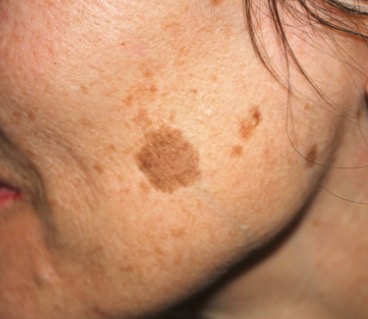 Solar Lentigo – (Extrinsic) Commonly referred to as sun spots, age spots, or liver spots, solar lentigo is caused by UV free-radical damage. Many products are formulated to address solar lentigos by interrupting melanogenesis (the chain reaction beginning with tyrosinase enzyme, remember?). Specific ingredients (see below) bond with tyrosinase enzyme so that tyrosine amino acid cannot bond with it. However, you have to apply every single day because melanin production will resume as soon as you stop treatment. I personally find laser to be the simplest, most satisfying approach to dealing with solar lentigo. Laser works by breaking up and dispersing melanin until it re-coagulates (in my experience, about 4 years).
Solar Lentigo – (Extrinsic) Commonly referred to as sun spots, age spots, or liver spots, solar lentigo is caused by UV free-radical damage. Many products are formulated to address solar lentigos by interrupting melanogenesis (the chain reaction beginning with tyrosinase enzyme, remember?). Specific ingredients (see below) bond with tyrosinase enzyme so that tyrosine amino acid cannot bond with it. However, you have to apply every single day because melanin production will resume as soon as you stop treatment. I personally find laser to be the simplest, most satisfying approach to dealing with solar lentigo. Laser works by breaking up and dispersing melanin until it re-coagulates (in my experience, about 4 years).
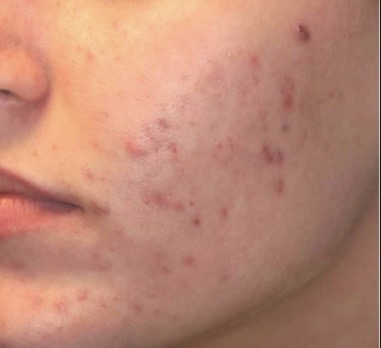 Post Inflammatory Hyperpigmentation (PIH) – (Extrinsic) Skin traumas, such as acne, picking, cuts or burns, stimulate cytokines and temporarily activate the tyrosinase enzyme to jump into action. Once cytokines leave the area, melanin production subsides and the melanin-stained skin cells eventually move upward and slough off (unless exposed to UV light which can set it for the long term). You can speed up the shedding process by using exfoliants, but it’s important to wait for the cytokines to exit the area (4 – 6 weeks) before exfoliating with scrubs, peels or microdermabrasion. You could re-stimulate cytokines and begin a new cycle of melanin production by exfoliating too early. Learn more about the cause of acne HERE, and how to treat it HERE.
Post Inflammatory Hyperpigmentation (PIH) – (Extrinsic) Skin traumas, such as acne, picking, cuts or burns, stimulate cytokines and temporarily activate the tyrosinase enzyme to jump into action. Once cytokines leave the area, melanin production subsides and the melanin-stained skin cells eventually move upward and slough off (unless exposed to UV light which can set it for the long term). You can speed up the shedding process by using exfoliants, but it’s important to wait for the cytokines to exit the area (4 – 6 weeks) before exfoliating with scrubs, peels or microdermabrasion. You could re-stimulate cytokines and begin a new cycle of melanin production by exfoliating too early. Learn more about the cause of acne HERE, and how to treat it HERE.
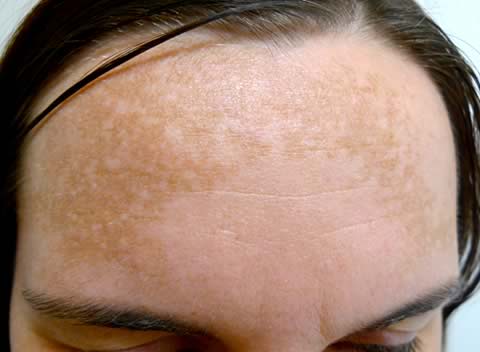 Melasma (or Chloasma) – (Intrinsic) Caused by melanin stimulating hormone (MSH) being released by the pituitary gland. Melasma is activated by pregnancy, birth control pills, hormone replacement therapy and even dietary hormones, such as plant estrogens (as found in soy). Melasma should go away on its own when hormones return to balance. UV light makes it worse and potentially permanent, so wear sunscreen and a hat when dealing with melasma! You can treat melasma with tyrosinase inhibiting topical products (see below).
Melasma (or Chloasma) – (Intrinsic) Caused by melanin stimulating hormone (MSH) being released by the pituitary gland. Melasma is activated by pregnancy, birth control pills, hormone replacement therapy and even dietary hormones, such as plant estrogens (as found in soy). Melasma should go away on its own when hormones return to balance. UV light makes it worse and potentially permanent, so wear sunscreen and a hat when dealing with melasma! You can treat melasma with tyrosinase inhibiting topical products (see below).
 Ephilides (Freckles) – (Intrinsic) Freckles are hard-wired into the DNA. Therefore, nearly impossible to treat. Sometimes Laser helps, but they’ll likely come right back.
Ephilides (Freckles) – (Intrinsic) Freckles are hard-wired into the DNA. Therefore, nearly impossible to treat. Sometimes Laser helps, but they’ll likely come right back.
Approaching Treatment
There are three angles to treatment and the best results are often obtained by combining them:
1) Interrupt the process of melanin production.
2) Exfoliate off the current discolored skin cells.
3) Protect the skin from UV radiation, by using sun protection.
Topicals
Topical skincare formulations work by affecting tyrosinase (the enzyme which stimulates melanin production). “Tyrosinase Inhibitors” are ingredients that bond to the tyrosinase enzyme so that it can’t bond with the amino acid tyrosine and set off down the trail of melanogenesis. “Inhibitors” block the pathways to producing melanin. But because melanocytes are located at the deepest layer of the epidermis, the effect of topical ingredients depends heavily on their ability to be absorbed through the skin layers.
Exfoliants
Exfoliants do nothing to interrupt the production of melanin but they clear away discolored, pigmented cells from the outer layers. “Manual” methods of exfoliation include scrubs and microdermabrasion (a tool which abrades off dead skin cells while sucking them away). “Chemical” exfoliants are acid and enzyme peels.
Laser
Laser energy is delivered to target areas in a series of short pulses. The Laser recognizes dark melanin against a lighter background. For this reason, it works best on lighter skin tones in winter when there’s little background tan. Laser energy causes pigment to break down and disperse but it doesn’t stop the melanocyte from producing melanin. Eventually, color deposits re-coagulate, so continued use of tyrosinase inhibiting products in conjunction with laser treatment is recommended. Depending on the extent of hyperpigmentation, a number of sessions may be needed. Laser produces the most notable results for a longer time period. It’s the simplest option if you don’t mind returning every 4-5 years.
Green LED
Green LED light therapy has the correct nanometer (length & strength) to break apart dendrites (the ‘tenticles’ sticking out of a melanocyte that delivers melanin to surface skin cells). It’s a similar current to Laser with no risk of burning. Green LED tools do not require a special license, nor training to operate.
Ablative Procedures
Ablative Procedures, including Laser Resurfacing, Deep Chemical Peels and Dermabrasion, are performed by a dermatologist due to the depth of skin layer they effect. These procedures have a greater potential to remove hyperpigmentation permanently. However, they do come with pain, some serious down-time, and carry the risk of scarring. Estheticians aren’t licensed to use peels at the same strength (pH and percentage) as a doctor.
Sun Protection
SPF’s should be used as a daily preventative. The suns rays have the power to set hyperpigmentation permanently. Especially when using exfoliants, the outer layer of dead skin cells, which act as a natural sun protection, are cleared away. There is no sense in using alpha hydroxy acids or retinols, only to damage your skin further by neglecting to use sun protection!
Skin Consults
Have questions or need advice? I offer skin care consultations through Skype at $1 per minute.
Pigment Reducing Ingredients
Antioxidants
Free radicals activate cytokines which stimulate melanocytes to produce melanin. Antioxidants Slow down melanognesis by preventing oxidation (free radical damage).
Arbutin
A derivative of hydroquinone (see below), yet less cytotoxic than hydroquinone. Naturally derived from plants, it inhibits tyrosinase and the maturation of melanosomes (small “packages” of melanin used to transport melanin from the melanocyte to surface skin cells).
Ascorbic Acid
Works to avoid the binding of copper to tyrosinase, and also converts dopaquinone back to L-Dopa (steps in the chain reaction of melanogenesis).
Azelaic Acid
Derived from yeast, and originally developed for the treatment of acne, it’s also found to be effective for hyperpigmentation, especially PIH from acne lesions. Azelaic acid demonstrated results similar to 4% hydroquinone, but without the side effects. It inhibits tyrosinase activity, and inhibits DNA synthesis, thereby preventing growth and proliferation of abnormal melanocytes.
Bearberry (Uva Ursi)
Is a powerful free-radical scavenger. The leaves of the common Bearberry plant also contain Arbutin, which has been shown to inactivate tyrosinase enzyme.
Citric Acid, Vitamin C & Citrus Oils
Vitamin C helps to resist pigmentation through tyrosinase inhibitors and antioxidant properties. They are brightening, as well as playing a key role in the production of collagen. But they’re also photosensitizing, which means they make your skin more sensitive to the sun, so they’re best applied in the evening hours.
Copper
Copper peptides remove damaged proteins from hyperpigmented, sun-damaged skin cells. It also stimulates the synthesis of new collagen. As new collagen is produced, healthy skin proteins replace damaged ones. Old damaged cells are pushed to the surface and exfoliated.
Ellagic Acid
A natural substance derived from strawberries, cherries, and pomegranates which inhibits tyrosinase enzyme, as well as being an antioxidant.
Glycolic Acid
Originally derived from sugar cane, glycolic acid is an alpha hydroxy acid which weakens the binding properties that hold dead skin cells together on the outermost layer of skin. This allows the dead skin cells to be exfoliated, and helps melanin-stained cells to shed more quickly. It’s great for removing PIH.
Hydroquinone
Originally derived from the Quince fruit, hydroquinone is known as the “gold standard” in lighteners. It effectively lightens pigmentation and suppresses the formation of melanin by blocking tyrosinase enzyme. It also degrades and decreases the formation of melanosomes. It has a tiny molecular structure making it able to penetrate down to where melanocytes reside. However, although hydroquinone is the most prescribed lightening agents in the world, it has been shown to be toxic with long-term use and has been banned in many countries. It’s prescribed because it works not particularly because it’s healthy. It’s legal in the US for estheticians to use at 2%, and doctors at 4, 6 or 8%. I personally won’t use it. If you’re going to use Hydroquinone, you must wear sunscreen every day (which you should anyhow). Wear hats and don’t go in the sun.
Kojic Acid
A naturally derived skin lightener which originated in Japan as a chelation agent, Kojic acid is extracted from different species of fungi, and also from a by-product of the fermentation process during the making of rice wine (Sake). It inhibits melanogenesis by chelating the copper bound to the tyrosinase, blocking melanin formation. Coupled with other ingredients, kojic acid can be as effective as hydroquinone in blocking melanin production. It’s also an antibacterial/fungal effective for the treatment of acne. The drawback is that it can cause contact dermatitis (allergic rash) in some people.
Lactic Acid
Originally lactic acid comes from sour milk. Now it’s usually synthetically produced in a lab. Lactic acid suppresses the formation of tyrosinase enzyme, as well as exfoliates discolored surface skin cells. It’s also hydrating, so is great for drier skin types. Lactic acid is my go-to alpha hydroxy acid for mature, sun-damaged skin.
A flavonoid and an anti-oxidant, it suppresses and prevents inflammation and free radical damage. It’s a strong tyrosinase inhibitor, 25x better than Kojic Acid. Yay, for natural and effective!
Mulberry Root Extract
Inhibits the conversion of L-dopa to dopaquinone (part of the melanogenesis process which results in melanin production), and is an anti-oxidant.
Mandelic Acid
An alpha hydroxy acid originally derived from almonds, mandelic acid blocks melanin production, as well as helps slough off top layers of pigmented skin cells. Combined with salicylic acid as a peel, mandelic acid has fewer side effects than a glycolic peel and with better efficacy. It has been shown to significantly decrease hyperpigmentation, including the most difficult: Melasma.
Niacinamide
An active form of niacin (vitamin B3), niacinamide works by preventing the transfer of melanin to the outer skin cells called keratinocytes. It also has a light bleaching effect.
Phenylethyl Resorcinol
A synthetic antioxidant, partially derived from scotch pine bark. It’s used in skin lightening products as a tyrosinase inhibitor and an anti-oxidant, yet most of the studies proving it’s efficacy were conducted by the developer. It’s not an ingredient I would rely on.
Retinoids
A form of vitamin A, retinoids (Retin A and Retinol) suppress the transfer of melanin from the melanocyte to the superficial skin cells called keratinocytes. Retinoids also increase cell turnover, and exfoliate the skin so that melanin is removed much faster.
Undecylenoyl Phenylalanine (UDP)
A synthetic compound, it works as a ‘melanin stimulating hormone antagonist,’ which means it prevents melanin synthesis from starting by blocking the receptor site on the melanocyte from melanin stimulating hormone.
Tetrahexyldecyl Ascorbate
Possesses the lightening effects of ascorbic acid, yet with better skin penetration, and less irritation. It is a mild tyrosinase inhibitor and converts dopaquinone back to L-dopa.

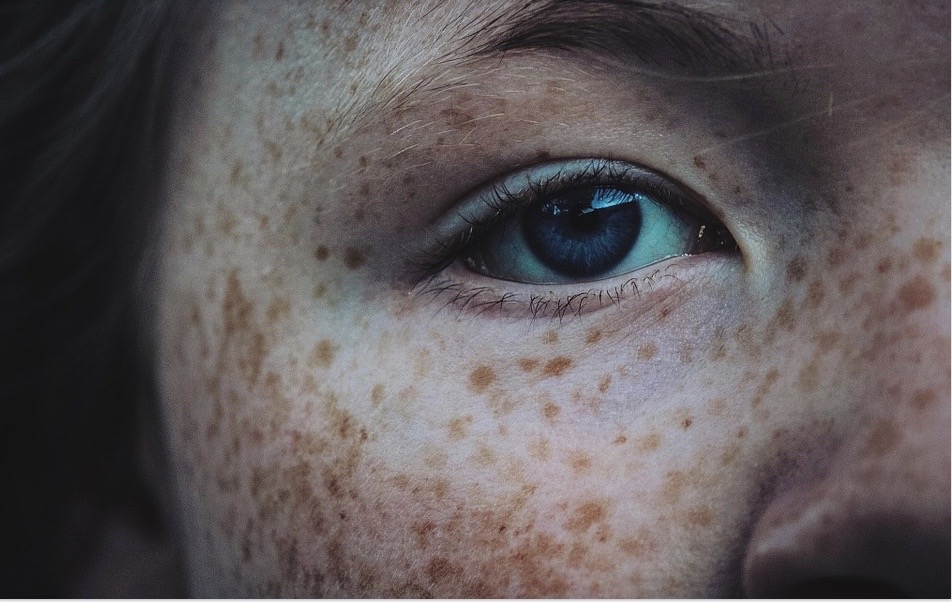
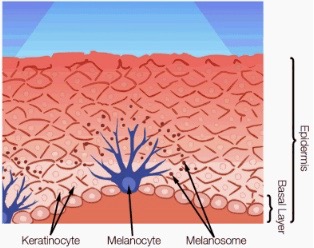
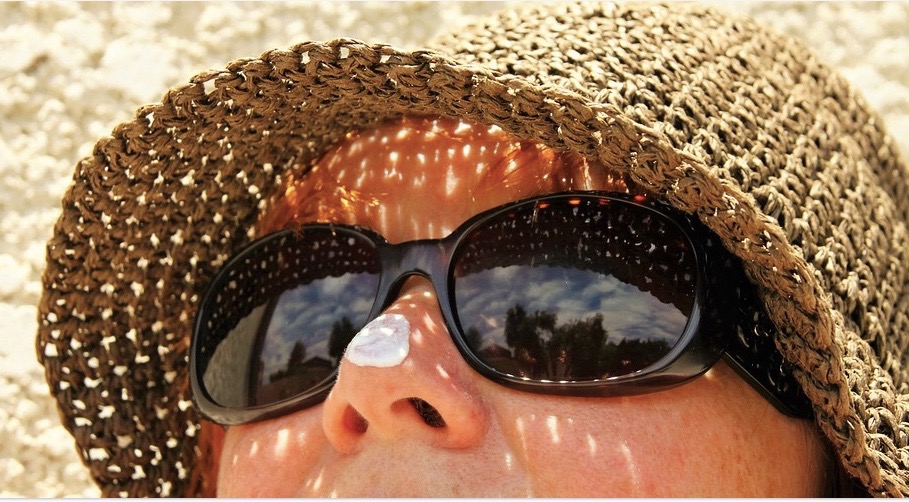


2 thoughts on “Skin Care: Treating Hyperpigmentation”
I have had eczema on my eyelid for over six months, red, scaly and itchy. Everything the doctor told me to try didn’t work and I was referred to a specialist which I could not afford.
On a whim I contacted Heather, she gave me a couple holistic, easy remedies with items I had around the house. Within 3 days the eczema was clearing up! No more itchy skin or rash and no fear of scarring.
She is amazing!
Yay! Great news!